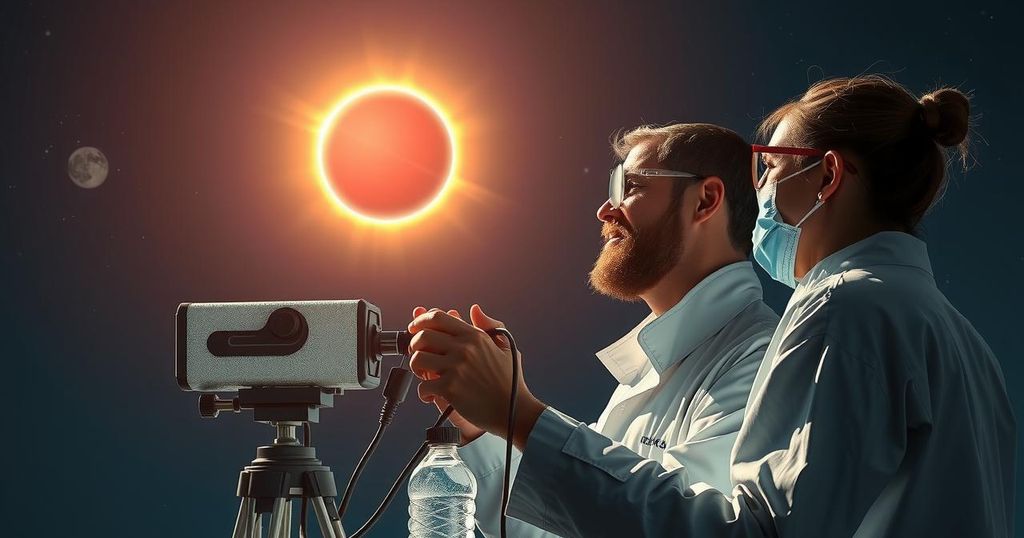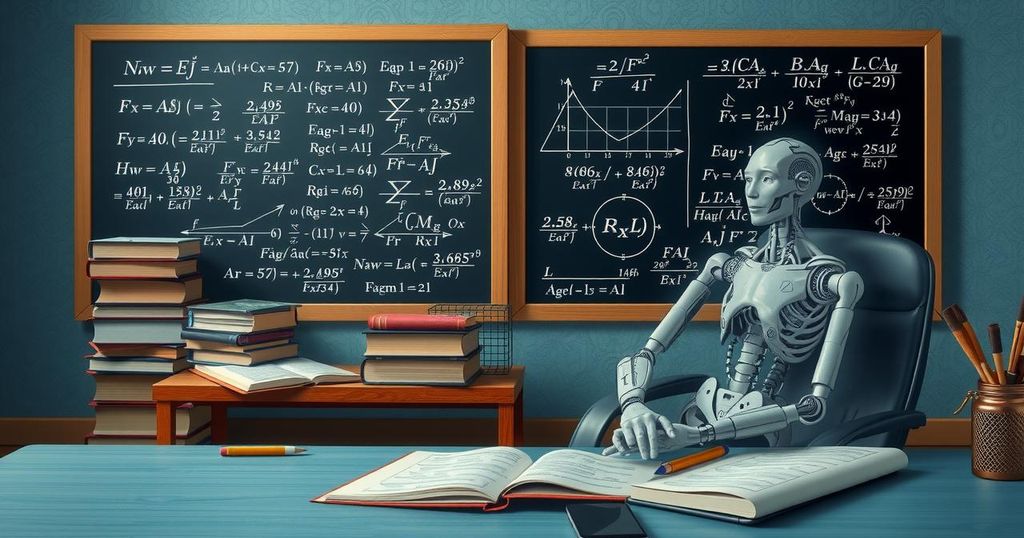Science
AMERICA, AMERICAN GEOPHYSICAL UNION, BRAZIL, CLIMATE, COLORADO, EDUCATION, ENVIRONMENTAL IMPACT, KELLY KORRECK, KOVAC, NASA, NORTH AMERICA, RESEARCH, SARAH KOVAC, SCIENCE, SOUTH AMERICA, SOUTHWEST RESEARCH INSTITUTE, SUSTAINABILITY, UNITED STATES, WASHINGTON, WASHINGTON, D. C
Liam Kavanagh
0 Comments
NASA Shares Insights from the 2024 Total Solar Eclipse Experiments
The April 8, 2024 solar eclipse ignited collaborative research across North America, with NASA driving experiments involving citizen scientists. Projects focused on capturing images of the Sun’s corona and studying radio communications and atmospheric changes, revealing critical insights about solar impacts on Earth. Preliminary results shared at the American Geophysical Union meeting celebrate both scientific discovery and community involvement, marking a significant achievement in the Heliophysics Big Year initiative.
On April 8, 2024, a breathtaking total solar eclipse arched its shadow across North America, treating spectators from Mexico to Canada to an awe-inspiring celestial event. To deepen our understanding of solar influences on Earth, NASA backed a myriad of research initiatives and enlisted the help of citizen scientists, all aiming to unveil the intricate dance between our planet and the Sun. At a recent American Geophysical Union meeting, scientists shared exciting preliminary outcomes from this monumental eclipse experience.
As the moon obscured the sun, Kelly Korreck, NASA’s eclipse program manager, remarked on the enthusiasm of scientists and countless volunteers who stationed themselves under the eclipse’s shadow, contributing invaluable insight to the Heliophysics Big Year initiative. Various projects captured the fleeting moments of totality, offering revelations about the Sun’s outer atmosphere, known as the corona, and how light’s temporary absence impacts Earth’s atmospheric dynamics.
Among the inspiring endeavors was the Citizen CATE 2024 project, where 35 teams gathered images of the corona during totality from coast to coast. Despite some setbacks caused by clouds, they managed to collect over 47,000 polarized images, crucial for understanding coronal processes. “The beauty of CATE 2024 is that we blend cutting-edge professional science with community participants from all walks of life,” said project manager Sarah Kovac, highlighting the collaborative spirit that thrived throughout the event.
While those on land were busy capturing images, two NASA WB-57 aircraft soared high above the clouds, extending their view of the totality for about 6 minutes and 20 seconds. Though some of the plane’s external cameras faced challenges due to vibrations, leading to some blurry images, the onboard spectrometers operated flawlessly, gathering significant data about the corona’s behavior, prompting Shadia Habbal to express optimism for future aerial observations.
Furthermore, the Ham Radio Science Citizen Investigation engaged over 6,350 amateur radio operators before, during, and after the eclipse. Their endeavors generated over 52 million data points, showcasing how the eclipse altered radio communications and the ionosphere. The research suggested that while some frequencies improved, others faced challenges during totality. Nathaniel Frissell emphasized that this project brought together the ham radio community with scientific inquiry.
Students also participated in the Nationwide Eclipse Ballooning Project, launching balloons into the eclipse’s shadow across the U.S. This captivating project, involving over 800 students, uncovered atmospheric ripples known as gravity waves triggered by the eclipse’s sudden darkening. Team leader Angela Des Jardins noted that the findings mirrored effects seen in prior eclipses, emphasizing how young minds contributed to critical research. Jie Gong highlighted the determination of students, many of whom had never launched balloons before, showcasing the essence of collective effort in scientific discovery.
The 2024 total solar eclipse presented a remarkable opportunity for research into the Sun’s effects on Earth, inspiring projects aimed at understanding atmospheric changes during such celestial events. NASA’s initiative to involve citizen scientists enriched the scope of the research and fostered community collaboration in gathering significant data about solar phenomena. The projects spanned from imaging the Sun’s corona to analyzing radio communications, highlighting diverse approaches to studying the dynamic interplay between solar activity and Earth’s atmosphere.
In conclusion, the collaborative spirit demonstrated during the 2024 solar eclipse signifies a remarkable fusion of science and community engagement. From capturing the corona’s elusive details to understanding the ionosphere’s behavior, these projects reflect the innovative strides made through interdisciplinary collaboration. As scientists piece together the data collected during this mighty event, they pave the way for future explorations, ensuring that the mysteries of the universe continue to captivate and inspire.
Original Source: science.nasa.gov




Post Comment